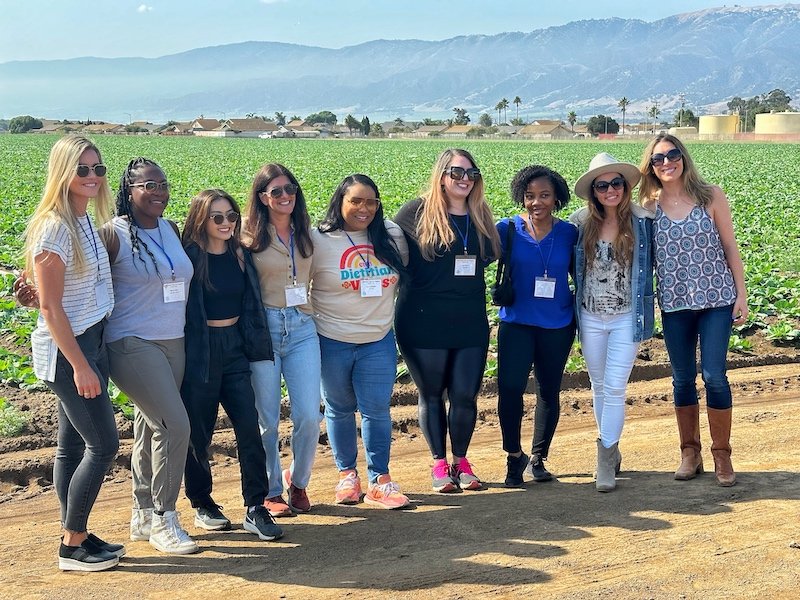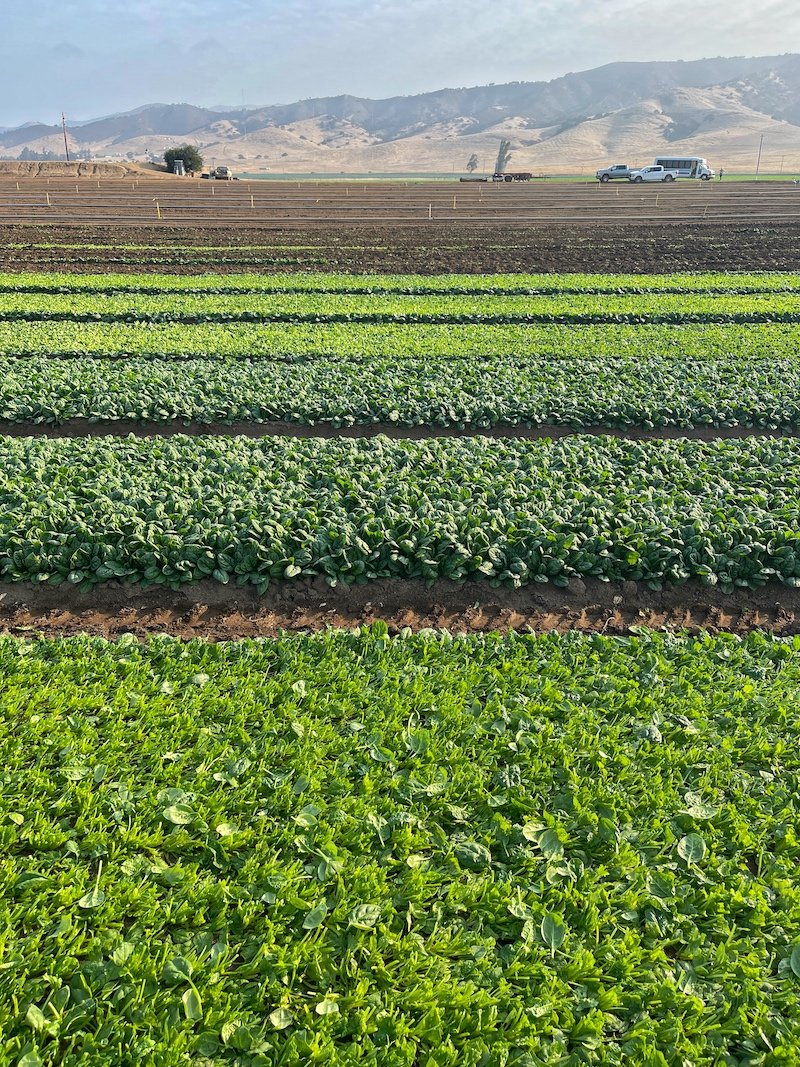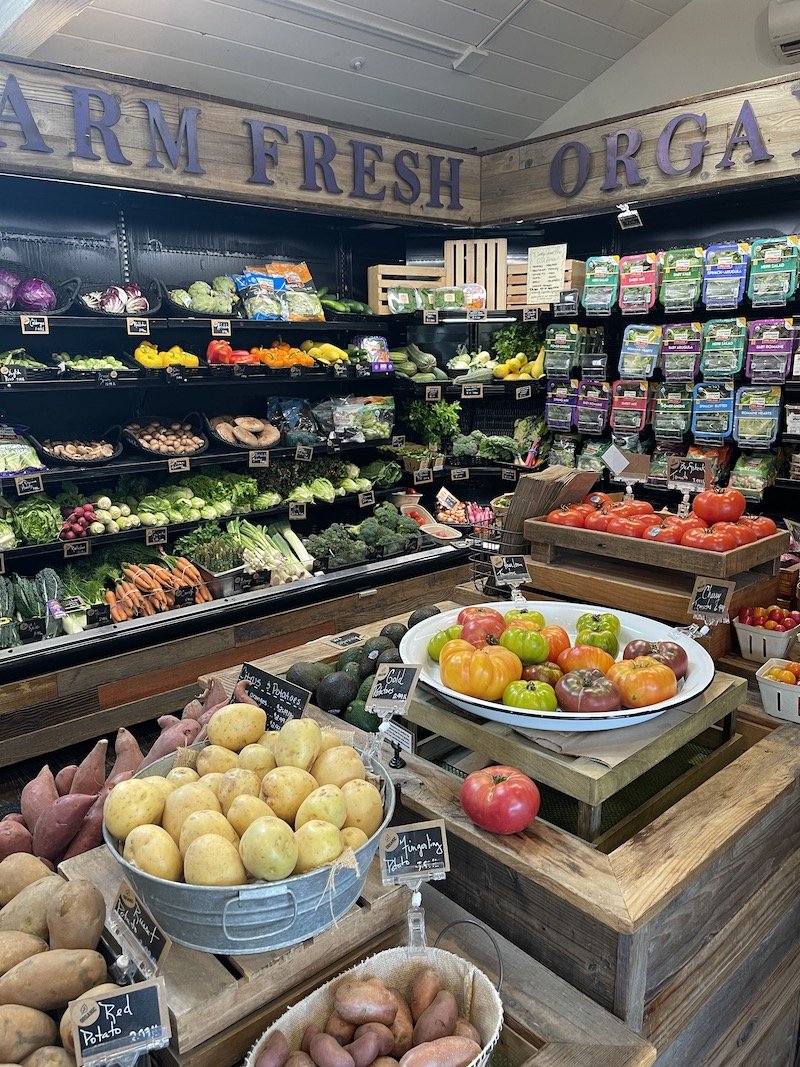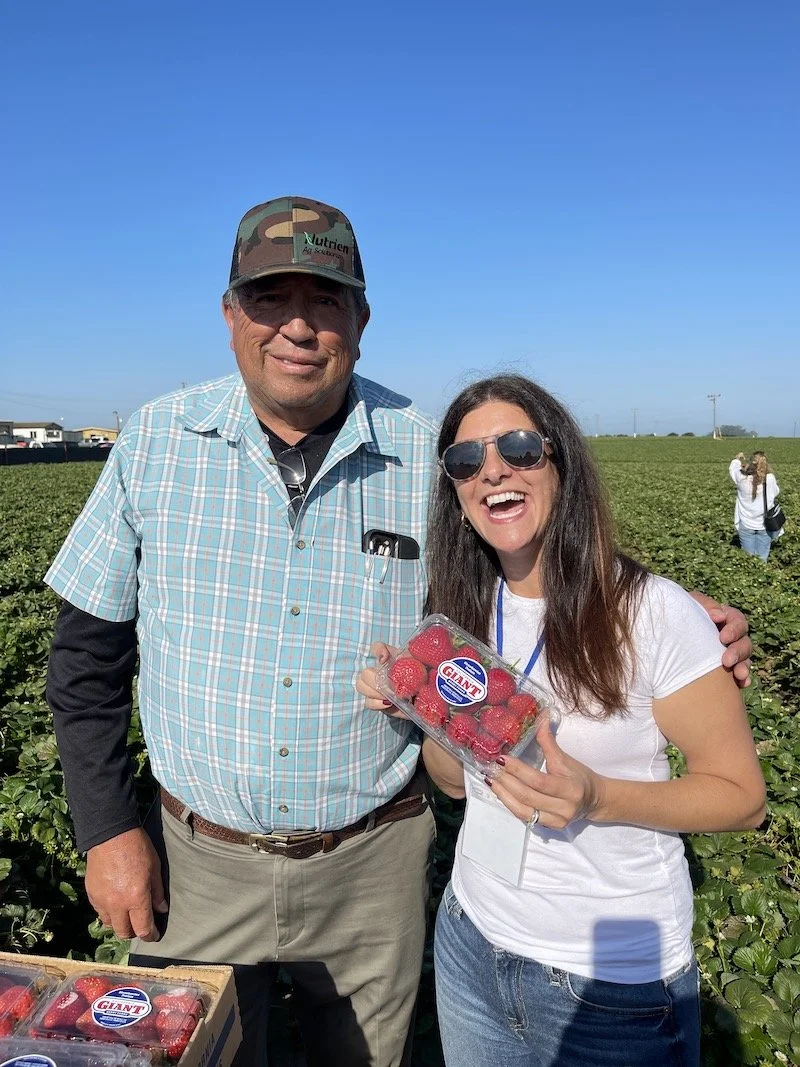Trip to Monterey California with Alliance for Food and Farming Recap
A few weeks ago I had the honor of attending a farm tour in Monterey, CA with the Alliance for Food and Farming. I learned all about safe and sustainable agriculture in the region, and am excited to share what I learned with you all!
Disclosure: My trip to California was paid for by Alliance for Food and Farming, and I was compensated to write this recap post. All thoughts and opinions expressed are my own.
One of the perks of working in a public facing dietitian role is getting to learn more about different parts of our food system that I wouldn’t normally get exposure to. Agriculture is one of those areas I’ve been really lucky to get some insight into through various farm trips I’ve taken over the years. A couple of weeks ago I visited Monterey, California with the Alliance for Food and Farming and learned so much (and had a total blast!), so I wanted to share a recap of my trip.
We spent our first full day in Monterey learning all about leafy greens at Taylor Farms. We started out in the fields, first watching conventionally grown spinach get harvested, then we got to see some incredibly cool technology and organic practices for controlling pests and weeds. Taylor Farms grows both conventional and organic produce (they also own Earthbound Farms), and one of the big takeaways I had from the whole trip was how sustainability goes so much further than the conversation about organic vs. conventional produce. While organic can be a more sustainable practice, it isn’t always. Pesticides and herbicides are still used on organic, and just because they are from natural sources doesn’t mean it’s better for the environment. Also, many organic (and sustainable!) practices are used in conventional farming too, in order to reduce pesticide and herbicide use and preserve soil health, because taking care of the land is also in the farmers best interest!
We also learned about how food safety starts in the field. One of my favorite examples was a farm next to theirs where cattle grazed in the distance. This could be a risk because you can have the strongest food safety practices in the world, but you can’t control what you’re neighbors are doing. With a combination of extensive testing where some of the water came into the farm, and friendly conversations with the neighboring farm who was able to put up fencing in sensitive areas, they’ve been able to protect their greens from dangerous microbes.
Bright and early in a field of romaine lettuce. Monterey (and California in general!) is so pretty!
A row of spinach after harvesting. The harvesting machine is able to filter out any trash that might accidentally get on the field using a laser, which helps prevent plastics contamination. The bits of spinach left on the field get worked into the soil to help enrich it with nutrients.
My favorite piece of technology we got to see was a drone that released beneficial bugs over a field of cabbage. The lacewings bugs eat mites and aphids that destroy cabbage, reducing the need for pesticides (both organic or non-organic). They eat the bad bugs in the most horror movie kind of way, using these little pointers on their head to inject a digestive secretion, dissolving their insides into juice in less than a minute! Ouch. The drone is able to evenly distribute the bugs over the field, or concentrate their release in areas where the farmers have identified more pests. It was such a cool and surprising way to reduce pesticide use! Another piece of technology we got to see was an autonomous weeder, a machine that is able to quickly weed row crops, saving time and money from having to do it by hand. They use both of these technologies for conventionally grown produce as well.
Watching the drone drop lacewings over cabbage.
An autonomous weeding machine.
After touring the fields, we went to the Taylor Farms processing facility to see romaine lettuce get processed before distribution to various food service companies and restaurants. Reminder that processing isn’t a bad word! In this case, it was being washed, chopped and bagged/boxed. It was fascinating to see the attention to food safety at the facility. When big outbreaks of food-borne illness make the news, I’ve seen where it makes people afraid of the food that was linked to the outbreak. When it comes to food production, certainly, there are some bad actors out there but other times bad things just happen, despite extreme caution. At Taylor Farms, there are multiple additional layers of food safety protocols added as the produce gets closer to packaging. Pro tip: if you’re buying pre-washed lettuce, don’t wash it again at home again, as you’re more likely to just contaminate it with something from your kitchen.
After lunch we had a really fun conversation with the team at Taylor Farms. One of the things I really appreciated was how transparent they were. Sometime when I do industry events there’s a lot of defensiveness, but I really appreciated that they were able to talk really openly about challenges and areas for growth. I loved learning about the work they are doing introducing with more sustainable packaging, especially since it’s a project the company my husband works for is a part of (my husband is a food packaging engineer). We also talked a lot about how climate change is impacting food production. One thing that really blew my mind was learning how because of climate change, many areas are not conducive to organic farming anymore. Some of their production is having to move to more stable, colder weather areas, like Minnesota. As someone who lived through the peak of the buy everything local and organic phase, I knew that was out of touch for consumers, but didn’t realize just how how of touch that was for farming too!
That night’s dinner at the Earthbound Farm Stand in Carmel was one of the highlights of the trip. The farm stand is where Earthbound Farm started back in 1992, and is now a market, cafe, event space, and home to the most beautiful 2 1/2 acre organic garden I’ve ever seen.
Had so much fun connecting (and reconnecting) with these RDs: Marisa Moore, Maya Feller, Andy Mathis, Amy Gorin, Malina Malkani, Mascha Davis, Kylie Sakaida, and Lauren Twigge
All the beautiful fresh, local and organic produce inside the farm stand.
We started with an elderflower cocktail and tour of the gardens, which was giving major backyard goals. It was overflowing with flowers, herbs, fruit trees and veggies (I accidentally typed overflowering at first which was a total Freudian slip but also 1000% accurate!). It smelled like heaven from the dozens of different types of lavender.
We started the meal with the most gorgeous farm stand salad - super simple and yet amazingly flavorful from the incredibly fresh produce - along with the prettiest charcuterie board I’ve ever seen.
Farm Stand Salad
If I somehow get the opportunity to choose my own last dinner it will be this exact cheese and charcuterie board.
Dinner was a California-ish meal of grilled chicken with tzatziki sauce, grilled flank steak with chimichurri, yummy farm fresh grilled veggies and roasted seasoned potatoes. Super simple and super satisfying, especially paired with a California pinot noir! I wish I got a picture but we also had the most beautiful spread of desserts, including a lavender lemon cookie I will dream of forever. If you’re ever in Carmel, stop by the farm stand for lunch - it’s perfection!
Simple and satisfying!
Smells like the best lavender candle ever.
Even dreamier at sunset….
The next day started with a conversation about food safety from both a microbial and a pesticide residue standpoint with two PhDs and researchers at UC Davis. If you’ve read my post on “The Dirty Dozen” then you know I’m not a fan of the fearmongering (and lack of grounding in science) behind the concept. I learned even more about just how bunk it is from the team there. For example, the way the EWG ranks the dirty dozen each year has nothing to do with actual toxicity. Instead of looking at whether there are pesticide residues in an amount that would be toxic, they base the ranking on the number of different types of pesticides found on produce. For example, a strawberry could rank high on the list because it has minuscule, non-toxic amounts of multiple different pesticides, all of which might be needed for different types of bugs, versus a larger quantity of one pesticide. Think of it like saying it’s more dangerous to be someone who takes a few different medications as prescribed than to take one medication waaay over the prescribed dose. You can learn more on the Safe Fruits and Vegetables website and even use this handy tool to see how many servings you’d have to eat of a food before experiencing adverse effects from pesticide reside. Excited to learn that I can safely eat 30 cucumbers every day without any effect, even if the cucumbers I ate had the highest pesticide residue recorded for cucumber by USDA lol.
Our second day was all about berries, and we started off at a strawberry farm with California Giant and California Strawberry Commission. We got to play in a field of strawberries and met the Rocha brothers, who after 16 years of picking strawberries started growing their own, first on 7 acres and now 1,100! They grow conventional strawberries, but use a ton of methods for more sustainable farming like planting in a mound to help preserve water, rotating with lettuce for healthy soil, and my personal favorite - using a bug vacuum to suck up the mites that eat strawberries and destroy them! After learning about strawberry harvesting, we got to pick and pack our own, which is way harder than it looks (although Lupe Rocha gave my box of strawberries a 98!). Shout out to all the farmworkers out there, who do incredibly hard work so we can eat.
With my award winning box of strawberries! Y’all, strawberries straight off the vine in the field were one of the most incredible things I’ve ever tasted. I probably ate 20! Unwashed too, because the dirty dozen is nonsense.
Our next stop was for more berries, getting to see where blackberries, raspberries and blueberries were grown. There were bees everywhere, because they are essential for pollenating berries. The berries are all grown under a plastic tent which helps with the temperature - the plastic is all recycled though! And of course, more berries straight off the vine. I think I got a years worth of antioxidants on this trip! A cool way they save water at this farm was by growing the berries straight out of containers versus planting them in the ground.
After lunch at Gizdich Ranch, including the most delicious strawberry rhubarb pie handmade by the 80/90-something year old matriarch of the ranch, we departed for a tour of the California Giant Berry cooler and distribution facility. To keep the strawberries as fresh as possible, they have to quickly cool them down and dry off any moisture that accumulates on the surface. Strawberries are super perishable - we met the person who gets aaaaallllll the emails complaining about moldy or mushy strawberries - which is why they are so careful about cooling them down within a couple hours after being harvested from the warm field. Unfortunately, they can’t control what happens at the grocery stores or at your house. They taught us that the best way to keep them fresh is to put them in the fridge immediately and skip all the weird vinegar washing and all that. It can also be helpful to put a paper towel in the plastic container and flip it upside down, which helps absorb any excess moisture.
After a little break where I got to go for a run along the ocean, we wrapped up our trip with a delicious final dinner at Montrio’s. My roasted chicken with gnocchi and roasted carrots was a highlight, as was the conversation with my new friends!
I had such a great time in Monterey, and am grateful to AFF for the experience. If you have any questions about farming, feel free to drop them in the comments below. If I’m not sure, happy to pass along to the scientists we met there, who were gracious with their time and excited to have the opportunity to share their knowledge.
And to close, completely unrelated but check out the sea lions I saw on my run! While there are always sea lions and seals in Monterey harbor, apparently with the hurricane in the Pacific that week, a ton had come on shore. A few locals there said it was the most they had ever seen! There were probably 300 on shore, although they blend in with the rocks in this picture.
If you enjoyed this blog post on farming and my trip to Monterey, you might also like:























